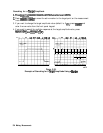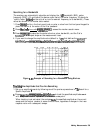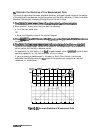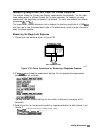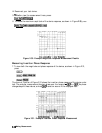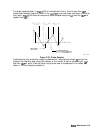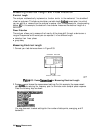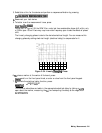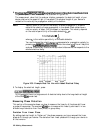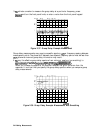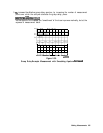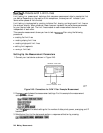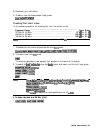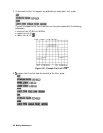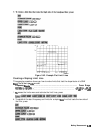
8.
Press
(-Ref)
~~~~~~~~~~
ad
turn the front
panel
knob
to
increase
me
ele&ricd
>,...>,.....
.
. . . . . . .
. . . . . .
. . . . . . .
.
. . . . . . . . . . . .
.
.
<.:.,.,.:..........
i.i..i:<<<Y .:...
. . .:::..
,.:.:
..,...
. .
..ss
length until you achieve the best flat line, as shown in Figure 2-35.
The measurement value that the analyzer displays represents the electrical length of your
device relative to the speed of light in free space. The physical length of your device is
related to this value by the propagation velocity of its medium.
Note
Velocity factor is the ratio of the velocity of wave propagation in a coaxial
cable to the velocity of wave propagation in free space. Most cables have a
relative velocity of about 0.66 the speed in free space. This velocity depends
on the relative permittivity of the cable dielectric
(cr)
as
Velocity
Factor
=
I
6
where
Ed
is the relative permittivity of the cable dielectric
You could change the velocity factor.to compensate for propagation velocity by
.Gst..
.:
“”
i;“.
.;;;;..;;;;;
..>>..
pressing (GJ
:,&lRJE~
~~~~~~~~~~~’
(enter the value)
@.
This will help the
//1,...:.
.:
.
. . .
.
.
.:::.;::
.A..
;
. .
..A.
.s
. . . . . . . . . . . . . . . . . . . . . . . . . . . . .
.:::..::
i............~.,.,.,.,.
.
.. ..A
.,..i;::.: .._......
.,.
analyzer to accurately calculate the equivalent distance that corresponds to the
entered electrical delay.
CENTER 134
000 000
MHZ
SPAN
2
000 000
MHZ
Figure 2-35. Example Best Flat Line with Added Electrical Delay
9. To display the electrical length, press:
In this example, there is a large amount of electrical delay due to the long electrical length
of the SAW
filter
under test.
Measuring Phase Distortion
This portion of the example shows you how to measure the linearity of the phase shift over
a range of frequencies. The analyzer
allows
you to measure this linearity and read it in two
different ways: deviation from linear phase, or group delay.
Deviation From Linear Phase
By adding electrical length to “flatten out” the phase response, you have removed the linear
phase shift through your device. The deviation from linear phase shift through your device is
all that remains.
242 Making Measurements



